#Irish immigrants
Text
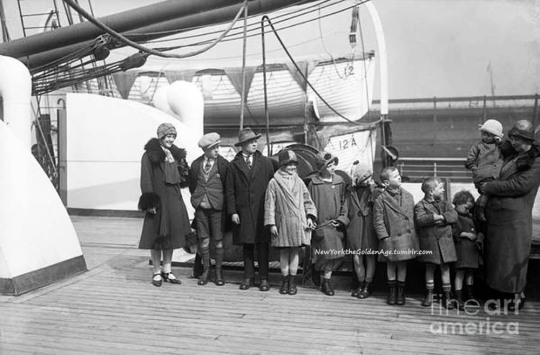
Mrs. Thomas McKessy, of Limerick, Ireland, upon her arrival in New York on the SS Aurania, March 16, 1926. She was joining her husband, who had come over the previous September, with 10 of her 21 children. Pictured (L-R) are Johanna, John, Dennis, Lizzie, Katherine, Bridget, Eugene, Donald, Ita, and Mrs. McKessy, holding Cecilia the youngest in her arms. Of her 21 children, 4 were already in New York, 10 had just arrived, 5 had died and two were married and living in Ireland.
Photo: Bettmann Archives/Getty Images/Fine Art America
#vintage New York#old New York#immigration#Irish#1920s#Irish-Americans#families#large families#Mar. 16#March 16#16 March#Irish immigrants#family#immigrants
97 notes
·
View notes
Text
#tiktok#Irish#history#usa history#racisim#racism#racist#tw rasicm#indentured servitude#white supremism#white supremisist#passing privilege#how the Irish became white#Irish immigrants#immigration#us immigration#immigrants
12 notes
·
View notes
Text
Dissecting the Civil War: Part 1
Public schools will oversimplify a complicated issue in American history. Is it to simplify the information for younger students? Or is there something malevolent in the reduction? My thesis is that the Civil War was not a war of abolition. What does this mean?
Slavery has been an issue within the United States since its foundation. The Southern States does everything they can to preserve the institution of slavery. The Southern States would exploit their slave populations in a delegated method. The Electoral College is an institution designed to "correct" the popular vote, I.E: Bush vs. Gore in 2000. This institution counts the representation of states via population. Only liberated men counted as a vote, in other words: white men.
In the 3/5ths Compromise, the Southern States advocated for slave representation. They did so to garner more votes in the Electoral College. They advocated for this despite a majority of their population's inability to vote. In essence, get representation without actually representing the population. Many saw through the absurdity, but reactionary voices are like toddlers. When told no, they just screech louder until somebody concedes.

The Founders and Slavery: Little Ventured, Little Gained, p. 427, [ of representation."
The 3/5ths Compromise was a concession to stop the incessant screeching. Getting votes without representing the constituents seems to be prevalent throughout American history.
What would stoke abolitionist sentiment? First, abolition is the idea of abolishing slavery. Some believed in gradual abolition as they transition from one system to another. Some believed in immediate abolition and this one struck fear. These immediate abolitionists would be the source of a Southern Planter's fear. Popular Abolitionist sentiment wouldn’t rise until the 1830s. The sentiment only went as far as saying they hated slavery, but there was no real plan. What's today's equivalent? Internet Marxists say they despise Capitalism without a plan to transition.
This untreated sentiment wouldn't last forever. In 1853, Anthony Burns was a slave that ran from his slavers in Virginia. He was in Boston for one month before US Marshals captured him. The Marshals were Federal Law Enforcement whose jurisdiction was the entire country. So yes, Federal Law Enforcement worked in favor of slavery despite the grandstanding. The Marshals arrested Burns thanks to the Slave Fugitive Act of 1850. The problem of runaway slaves was so prevalent that Congress passed a law for it. Or we could prohibit slavery, that's an option. Or you know, keep wasting tax dollars on preserving slavery.
They were preparing Burns for deportation back to Virginia. Many Bostonians took an exception to this. Many saw it as a Southern aristocrat enforcing their archaic ways on Northerners. As far as they're concerned, Burns was a part of their community. The Committee of Vigilance was a group founded to counter the Slave Fugitive Act. Their purpose was to make life hard for those attempting to enforce the Slave Fugitive Act. This committee consisted of intellectuals, white allies, and working-class people. It was a union to stick a middle finger against slavery. But hey, counterculture was only a thing of the 60s and 70s. Nixon and Reagan would be proud of these patriots...
The Committee debated between two courses of action.
A: break into the courthouse and remove Burns in a daring rescue. Without Burns, the trial couldn't go through.
B: create a barrier of people so that authorities couldn't get through.
But remember, disturbing law enforcement is only a thing troublemakers and hippies do. This isn't a pastime that's prevalent throughout American history. No, not at all...
Now, most of the committee vied for option B because it was a safer option. Safer for both the committee and Burns. They didn't want to risk Burns' life in an adventurist rescue. That didn't stop everyone though.
Half of the committee vied for the peaceful option while the other half got to work. At night they would march to the courthouse armed with revolvers and axes. They would use these axes to chop at the doors of the courthouse, but these were thick ass doors. So what could be an answer for thick ass doors? Grab a wooden construction beam and use it as a battering ram. Yes, a group of Bostonians grabbed a wooden construction beam and larped as crusaders.

The committee broke in, prompting a fight between them and Court Security. During this Medieval Larp, a member of Court Security died. You know what you gotta do when somebody dies? Yes, they called the police. It's debated whether these abolitionists would have been successful in their escape attempt. Even if they made it to Anthony's cell, it was reinforced with iron. Because you know…Slavers don’t like losing their property.
It got so bad that the United States sent the Marines to keep Boston in order while the trial proceeded. Boston got so wild that the Marines had to get involved.
Semper Fi, don't make the slavers cry.
The mayor was responsible for keeping order in the city while the trials proceeded. The crowds attempted to convince the Mayor to pardon Anthony and not allow the trial to go through. The mayor was almost convinced. Even in the 1850s, the police were dicks. The Mayor said that a company of Marines should be enough to keep Boston in order. The Marshals disagreed. They were right, it would take the entire U.S. Department of Defense to keep Boston in line. Even then, I look at the U.S. Military's track record of peacekeeping. Anyway, they sent a Brigade of Marines instead of a Company, a much larger number.
Some friends of Burns then played the economic game. So if the problem was that the Planter lost a slave, they could compensate the slaver. They have attempted to gather money to buy Burns' freedom. But no matter the offer, the Planter turned it down. Something tells me it wasn't an economic issue as much as it was a social issue. And if you're expecting nuance toward slavers, you won't find it here. Slavery is a bastard profession and all slavers are bastards. All Pro-Slavery advocates are bastards. Their parents are failures and if their kids endorse slavery, they're little Cuntsylvanians. The nuance ends with slavery. Go fuck yourself.
If that didn't turn you away, we can continue. Because the old prick wouldn't accept financial compensation the deal was final. Burns is to be deported. Although, many Bostonians would say not without a fight. As the Marshals and Marines escorted Burns, crowds met them in the streets. They held up signs and coffins. They burned the coffins as a funeral for Burns' freedom.
Just imagine being Burns for a moment. All you wanted to do was live life like a normal human being. To live life without being under somebody's thumb. But because you decided to assert your humanity, Boston riles in your defense. The city of Boston is in civil strife with the United States because you exercised your human rights.
The convoy escorting Burns would run into an unexpected barrier of civilians. The civilians weren’t allowing them to cross, so the Marines would charge at the crowd with Bayonets. That’s right. The Federal Government charged civilians with bayonets. The United States was willing to gut civilians to preserve slavery in 1853. Ultimately Burns was deported back to Virginia. In retaliation, Massachusetts passed a law barring any enforcement of slavery. No law enforcement, including Marshals, could come into Massachusetts to collect fugitive slaves. If a slave entered Massachusetts, they were free. No amount of Southern screeching could change that. Fuck your feelings.
The other fucked part…Burns’ trial was not held by a jury. As a result of that fuckery, Massachusetts placed another concession. Any trial of a slave held is to be judged by a jury of their peers. You know, that right that American citizens are supposed to have in the first place. Something, something 6th Amendment.
Tremain, Mary (1892). Slavery in the District of Columbia; the policy of Congress and the struggle for abolition. University of Nebraska Department of History and Economics Papers. New York: G. P. Putnam's Sons. Boston slave riot, and trial of Anthony Burns. Fetridge and Company. 1854. p. 5. Retrieved April 26, 2013.
Stevens, Charles (1856). Anthony Burns: A History. Boston, Massachusetts: John P. Jewett and Company. Linder, Douglas O. (2019). "The (Fugitive Slave) Trials of Anthony Burns: An Account". www.famous-trials.com. Retrieved 2020-11-22.
Linder, Douglas O. (2019). "Orders of President Franklin Pierce in the Anthony Burns Affair (1854)". www.famous-trials.com. Retrieved 2020-11-22.
Abolitionists weren’t the only ones inflicting violence. Elijah Parish Lovejoy was an abolitionist editor of a newspaper in Illinois. A wild band of inbreds murdered Lovejoy. So reactionaries are murdering abolitionists to preserve the institution of slavery. Why would you need to murder? Why not just debate the virtues of slavery in the free market of ideas? Why would you need to use violence to advance your position?
Oh and on top of that, the abolitionists had to hide Lovejoy's grave. Because the Pro-Slaver mobs can't be burdened with decency. They have to defile the graves of those they murdered. They have to show society how shitty they are about their ideas. If you oppose their ideas, they murder and desecrate your grave. These are the rules. Which is odd considering some people's positions on certain monuments.
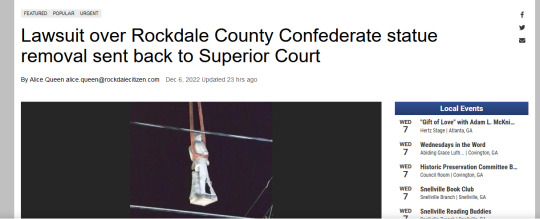
But desecrating a man's grave they murdered wasn't enough. They also had to go to a warehouse to destroy this man's editing equipment. Yes, because Lovejoy held the one press to print them all. They must destroy the press before he inflicts his abolitionist magic upon the lands. Destroy the press, Frodo!
But some people had decency. A group gathered at the warehouse to defy the inbred coalition. A fight broke out between the two groups. The local sheriffs would charge the mob with "unlawful defense." Hmmm...let me check my notes...
Second Amendment: A well-regulated Militia, being necessary to the security of a free State, the right of the people to keep and bear Arms, shall not be infringed.
First Amendment: the freedom of religion, press, and assembly. I believe those are covered grounds. And they're trying to say unlawful defense?
Upon trial, the judge declared that neither party was guilty. Even though the Pro-Slavery mob attempted arson and successfully committed murder. So why was the mob forgiven for its crimes? The judge of the case was a member of the Pro-Slavery mob. He did a poor attempt at hiding it as he was wounded from the incident. So a judge was able to conduct a trial of a crime he was a part of? This is an example of next-level fuckery and many people grew tired of it.
Enter John Brown. A man who had described his fight against slavery as a mission sent by God himself. He described himself as an instrument of God.
youtube
Bleeding Kansas is an example of how far John Brown goes. When he moved there, he knew what he was getting into. When states were going westward, they had a choice either to become free or slave states. Many Pro-Slavery mobs used intimidation and violence to drive out Abolitionists. However, they don't fare too well against those that fight back. After burning down Brown's estate, once was enough for him to gather a militia.

Kansas was a stronghold against Confederate sentiment thanks to John Brown's efforts. Any Confederate attempt of occupation faced Abolitionist Guerilla warfare.
Bleeding Kansas was a Wild West epic for the ages that involved two groups of posse in shootouts. The open assassination of politicians. While the Civil War may have officially begun in South Carolina. The war's real beginning was Bleeding Kansas.
Pro-Slavers would assassinate abolitionist politicians out in the open. Abolitionists would assassinate Pro-Slaver politicians out in the open. None of the Pro-Slaver murders were in self-defense. It was cases like Lovejoy where they would simply kill a man for disagreeing.
So for those that want me to say John Brown was a terrorist, the Slavers instigated the fight. They're just mad because Brown finished it. Just like they were mad about Santa Anna slaughtering Pro-Slavers at the Alamo. Freedom my ass, y'all just wanted to keep your slaves. Freedom for me, but none for thee.
Biblical tales motivated Brown's convictions. He had a vision of freeing the slaves from Southern plantations as Moses had for Hebrews in Egypt. When he planned for Harper's Ferry, he hoped the liberation would inspire others to revolt.
"A few men in the right, and knowing that they are right, can overturn a mighty king. Fifty men, twenty men, in the Alleghenies would break slavery to pieces in two years" - John Brown
He would try to convince Frederick Douglass, but Douglass thought it to be a suicidal mission. Douglass's assessment wasn't wrong. Some wealthier abolitionists provided funding for Brown's activities. He used this funding to enact the help of a British mercenary. The mercenary wrote a tactical book. Brown's militias studied this book in anticipation of Harper's Ferry, including Brown's sons.
The raid started smoothly. They captured the armory in Harper's ferry. They cut off the telegram, so no instant communication. There was only one watchman versus Brown’s militia. He had captured some hostages who were owners of the plantation. Brown had ordered the slaves to be informed of their liberation. A train went by the town. Brown held up the train but later released them.
This proved to be the beginning of the end of Brown's raid. The passengers of the train, frightened reported Brown's militia. The next town over had telegram access to nearby sheriffs. This is when things would go South, pun intended.
A wave of deputies and militia came at Brown's militia, pinning them inside a firehouse. Two of his sons died during the firefight. Brown had sent one of his sons to approach the militia with a white flag of surrender... Reactionaries are beyond reason. They gunned him down despite being unarmed and waving a white flag. Two of his other sons did escape, but the militia captured and hanged them. Then the US Army gets involved, allowing Brown to surrender. Your sons are dead, the slaves are still in chains and now the Army was descending on you and the men you led. He wanted to die during the battle, but during the Army's intervention, they captured him alive.
While in jail, a friend of his got arrested on purpose for drunken brawling. He offered to break John Brown out of jail, but Brown was determined not to do so. He declined the opportunity and wrote a letter to his wife and remaining children. He vouched to be a martyr for the Abolitionist cause. The U.S. would hang Brown and some of his militia cohorts for their violent actions.
Wilson, J. G.; Fiske, J., eds. (1900). "Lovejoy, Elijah Parish" . Appletons' Cyclopædia of American Biography. New York: D. Appleton. pp. 34–35. "Dimmock Funeral To-day". St. Louis Globe-Democrat. November 20, 1909. Archived from the original on June 7, 2021. Retrieved June 7, 2021.
St. Louis Marriage Index, 1804-76. St. Louis, Missouri: St. Louis Genealogical Society, 1999 Van Ravenswaay, Charles (1991). St. Louis: An Informal History of the City and Its People, 1764-1865. Missouri History Museum. pp. 276–277, 279–280.
Finkelman, Paul (Spring 2011). "A Look Back at John Brown". Prologue Magazine. Vol. 43, no. 1. Archived from the original on June 23, 2016. Retrieved September 11, 2021.
Hinton, Richard J. (1894). John Brown and his men; with some account of the roads they traveled to reach Harper's Ferry. Boston: Funk & Wagnalls. Archived from the original on May 25, 2021. Retrieved January 25, 2021. "John Brown and the Harpers Ferry Raid". West Virginia Archives and History. Archived from the original on January 11, 2008. Retrieved January 11, 2008., wvculture.org; accessed August 29, 2015.
Brown, John (December 10, 1859) [November 8, 1859]. "Brown's letter to his wife". United States Police Gazette. Vol. 2, no. 82. p. 2.
War was a fickle thing in the 19th Century. Today, many Western nations vie for a Professional Army. Back in that day, the war would mean the conscription of every able-bodied man. This is when Black men were considered people on paper, but not enough to be treated as such. No need to fear, in the United States there was a way out of being conscripted.
Either A. you find a replacement.
or B. $300 to support the war effort. Doesn't sound too bad until you apply inflation. $300 in the 1860s would be $10,000 today. Yeah, because we all have $10k lying around, right?
Despite this blatant attempt to kill off the poor, the Union didn't have the numbers to continue the war. That is until they noticed a bunch of Irish immigrants trying to escape Britain. So that was another group of immigrants they could pull from. The recruiters go as far as to recruit Irish immigrants fresh off the boat. Cartoonish I know.
The Union would use the Irish brigades of recruits as cannon fodder, taking a bulk of the casualties. Irish families would hear of this back in their respective Northern states. The families were becoming aware of the cannon fodder mentality that Union had for the Irish. Either Britain was trying to starve them out or the U.S. sent them into a meat grinder. When the U.S. had the nerve to conscript more Irish, many riots broke out across the North. Unfortunately, the U.S. was able to deflect this riot.
Many newspapers published articles blaming Black Americans for the Civil War. The Civil War started over the Southern issue of preserving slavery. However, the newspapers wouldn't stop publishing defamatory articles about Black Americans. They also wouldn't stop publishing how Blacks are stealing jobs from the Irish. That if the Civil War were to end, many Black Americans would move North to steal jobs from them. This isn't like today where you could verify or research the subject matter. The only sort of media you were able to consume was within your local area. So if your news press was printing out racist garbage, that's all you consumed. And for those that only consume vitriolic garbage, I'll present you with this example.
So if you're consuming nothing but articles that instigate hatred that will happen. The media was free to publish articles condemning interracial marriage. Like media is free to label LGBTQ+ functions as pedophilic today. Despite the atrocious nature of these incidents today, those were all isolated incidents.

The Irish riots on a larger scale. Many businesses were burned to the ground. Some people were lynched or beaten to the ground with clubs and bricks. When you published nothing but vitriol against a group of people, are you surprised? Some people feign surprise, but these people know the power of the media. This is why they continue falsely branding the LGBTQ+ as pedophile-friendly. This is despite politicians like a Matt Gaetz investigation involving human trafficking. Or despite figures like Matt Walsh who emphasizes a girl's fertility at 16. Expressing frustration at the current age of consent. These are the kind of people that instigate violence against minority groups.

The Irish Draft Riots are the kind of violence that these bastards are aiming for. It worked in favor of the Union because they were able to continue the Civil War for another two years. Because of this riot, Landlords evicted their black tenants fearing violence. So Landlords had sent black people to be brutalized by a mob to cover their asses... This riot was also used as a justification to keep white and black populations separate. Again, the media had perpetrated this violence, but it was used as a justification.
Li, D. K. (2022, September 14). Michigan man who killed his wife went down a 'rabbit hole' of conspiracy theories after Trump's 2020 loss, daughter says. NBCNews.com. Retrieved December 7, 2022, from https://www.nbcnews.com/news/us-news/michigan-man-killed-wife-went-rabbit-hole-conspiracy-theories-trumps-2-rcna47701
Hasanabi. (2022, October 5). Shocked that Matt Walsh is interested in impregnating 16 year olds. pic.twitter.com/q8s66ebyvq. Twitter. Retrieved December 7, 2022, from https://twitter.com/hasanthehun/status/1577716649116852224
https://www.history.com/this-day-in-history/congress-passes-civil-war-conscription-act https://www.history.com/topics/american-civil-war/the-irish-brigade
Harris, Leslie M. (2003). In the Shadow of Slavery: African Americans in New York City, 1626–1863. University of Chicago Press. pp. 279–88. ISBN 0226317757.
At the end of the Civil War, the United States had no choice but to capitulate, right? The war was over slavery, so slavery would finally be abolished, right? As per usual, Congress had somehow sidestepped the real problem. By side-stepping the real problem, it paved a way for more problems. Here's what the death of 1 Million Americans and 2 Million Traitors brought us.
15th Amendment: Passed by Congress on February 26, 1869, and ratified on February 3, 1870. The 15th Amendment granted African American men the right to vote.
14th Amendment: All persons born or naturalized in the United States, and subject to the jurisdiction thereof, are citizens of the United States and of the State wherein they reside. No State shall make or enforce any law which shall abridge the privileges or immunities of citizens of the United States; nor shall any State deprive any person of life, liberty, or property, without due process of law; nor deny to any person within its jurisdiction the equal protection of the laws.
13th Amendment: Neither slavery nor involuntary servitude, except as a punishment for crime whereof the party shall have been duly convicted, shall exist within the United States, or any place subject to their jurisdiction.
So in the end…the Union didn’t fight to abolish slavery. It fought to monopolize it. I wish this was a joke... It would be nice if we were just on a long-running episode of Punk'd.
The Founders and Slavery: Little Ventured, Little Gained, p. 427, [ of representation."
Tremain, Mary (1892). Slavery in the District of Columbia; the policy of Congress and the struggle for abolition.
University of Nebraska Department of History and Economics Papers. New York: G. P. Putnam's Sons. Boston slave riot, and trial of Anthony Burns.
Fetridge and Company. 1854. p. 5. Retrieved April 26, 2013. Stevens, Charles (1856). Anthony Burns: A History. Boston, Massachusetts: John P. Jewett and Company.
Linder, Douglas O. (2019). "The (Fugitive Slave) Trials of Anthony Burns: An Account". www.famous-trials.com. Retrieved 2020-11-22.
Linder, Douglas O. (2019). "Orders of President Franklin Pierce in the Anthony Burns Affair (1854)". www.famous-trials.com. Retrieved 2020-11-22.
Wilson, J. G.; Fiske, J., eds. (1900). "Lovejoy, Elijah Parish" . Appletons' Cyclopædia of American Biography. New York: D. Appleton. pp. 34–35. "Dimmock Funeral To-day". St. Louis Globe-Democrat. November 20, 1909. Archived from the original on June 7, 2021. Retrieved June 7, 2021. St. Louis Marriage Index, 1804-76. St. Louis, Missouri: St. Louis Genealogical Society, 1999
Van Ravenswaay, Charles (1991). St. Louis: An Informal History of the City and Its People, 1764-1865. Missouri History Museum. pp. 276–277, 279–280.
Finkelman, Paul (Spring 2011). "A Look Back at John Brown". Prologue Magazine. Vol. 43, no. 1. Archived from the original on June 23, 2016. Retrieved September 11, 2021.
Hinton, Richard J. (1894). John Brown and his men; with some account of the roads they traveled to reach Harper's Ferry. Boston: Funk & Wagnalls. Archived from the original on May 25, 2021. Retrieved January 25, 2021.
"John Brown and the Harpers Ferry Raid". West Virginia Archives and History. Archived from the original on January 11, 2008. Retrieved January 11, 2008., wvculture.org; accessed August 29, 2015.
Brown, John (December 10, 1859) [November 8, 1859]. "Brown's letter to his wife". United States Police Gazette. Vol. 2, no. 82. p. 2.
https://www.history.com/this-day-in-history/congress-passes-civil-war-conscription-act https://www.history.com/topics/american-civil-war/the-irish-brigade
Harris, Leslie M. (2003). In the Shadow of Slavery: African Americans in New York City, 1626–1863. University of Chicago Press. pp. 279–88. ISBN 0226317757.
#civil war#united states of america#john brown#us history#slavery#united states#class war#american history#history#boston#massachusetts#deus vult#gangs of new york#irish#irish immigrants#misinformation#current events#lgbtq+#confederate#confederacy#bleeding kansas#kansas#3/5 compromise#class warfare#south#potato famine#draft riots#conscription#matt walsh#transphobes
3 notes
·
View notes
Text
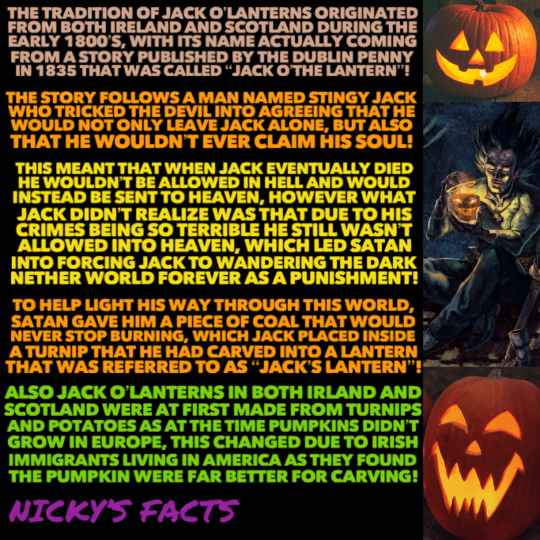
I’ve just now realized I have never seen anybody use a jack o’lantern as an lantern, instead they are just used as organic candle holders!🎃
🇮🇪🎃🇮🇪
#history#happy halloween#jack o’lantern#ireland#stingy jack#scotland#halloween#pumpkin#irish immigrants#united states#halloween lover#spooky#turnip#irish history#pumkin carving#halloween girl#irish american#potato#jack’s lantern#usa#halloween history#dublin#jack o’the lantern#spooky season#american history#nickys facts
2 notes
·
View notes
Text
Book Review: Days Without End by Sebastian Barry
Author: Sebastian Barry
Title: Days Without End
Narrator: Aidan Kelly
Publication Info: Blackstone Publishing, 2017
Summary/Review:
Set in the turbulent United States of the 1850s and 1860s, Days Without End is narrated by an Irish immigrant named Thomas McNulty. Having escaped the great hunger as a teenager, McNulty finds himself in the American West where he befriends fellow Irish immigrant…
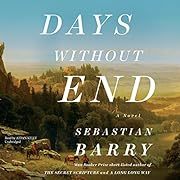
View On WordPress
#American Civil War#Audiobook#Book Reviews#Books#Historical Fiction#Indian Wars#Irish Immigrants#LGBTQ
0 notes
Text
The Irish Connection: Armagh, Banbridge & Craigavon Voices in the American Civil War
The Irish Connection: Armagh, Banbridge & Craigavon Voices in the American Civil War" delves into the remarkable stories of Irish immigrants who played a significant role in the American Civil War. This captivating exploration highlights the unique experiences and contributions of individuals hailing from Armagh, Banbridge, and Craigavon. From the bustling streets of Armagh to the thriving communities of Banbridge and Craigavon, the Irish diaspora left an indelible mark on one of America's most defining moments. This narrative uncovers the trials, sacrifices, and triumphs of Irish soldiers, illuminating their courage, resilience, and unwavering commitment. Discover the intertwining threads of Irish-American heritage and history as we unveil the untold stories of these valiant men and women who shaped the course of a nation at war.
#American Civil War#Armagh#Banbridge#Craigavon#Voices of the American Civil War#Irish in the American Civil War#Irish immigrants#Irish soldiers#Irish-American heritage#Irish-American history#Civil War veterans#Irish diaspora#Armagh diaspora#Banbridge diaspora#Craigavon diaspora#Irish contributions
1 note
·
View note
Text
Review: The Campbell Sisters
Synopsis:
Helen Campbell is the eldest and most practical of three sisters, daughters of hard-working Irish emigrants living in New York City in the 1950s. She does what she can to keep the wild-child middle sister, Carolyn, in line and support the youngest, Peggy, as she pursues her dreams of becoming a doctor. Then Helen meets Charlie.While its love at first sight for those two, Carolyn’s…

View On WordPress
#1950s#Amazon#book tour host#contemporary#drama#Eileen Joyce Donovan#entertaining#family#Fiction#fun#Goodreads#historical#Irish Immigrants#love#Manhattan#must read book#new#New Beginnings#New Release#New York#novel#recommended#Siblings#Sisters#The Campbell Sisters#well-done#women&039;s fiction
0 notes
Text



my son
#traditional irish samhain lanterns were carved out of turnips#irish immigrants in america started using pumpkins instead because they were easier to get (and waaay easier to carve)#thus we got the traditional halloween pumpkin#happy halloween#halloween#spooky season#personal#irish things#samhain
4K notes
·
View notes
Text
The far right have started serious riots in Dublin in response to a stabbing by an immigrant.
I don’t even need to go into how him being an immigrant is fucking irrelevant, and making this about your fascist opinions is taking away the attention from the actual victims. You guys are smarter than to fall for that.
Gangs of white Irish men are destroying the city; setting cars, buses, and shops on fire. They’re posting videos of them laughing as they smash out the windows of buses and shops and loot the place.
This is the right wing’s politics. “Immigrants are destroying Dublin”… says the people actively smashing the place to bits.
Please stay inside if you live in the centre. Especially for immigrants/ people of colour/ trans people / queer people/ any group that white supremacists target.
#ireland#irish#Dublin#dublin rn#Dublin riots#far right extremism#left wing#immigration rights#tw xenophobia
1K notes
·
View notes
Text
The Irish, the Elephant and Wabash County IN
The Irish, the Elephant and Wabash County IN
Wabash, Indiana is a charming river town. The Wabash River flows through the town as well as the surrounding area. I was on a hosted trip, along with my cousin Carrie Steinweg. She has a blog, Chicago Foodie Sisters.
The beautiful stained-glass windows in the Sanctuary!
Our residence for the next two days was The Sanctuary. This building is an amazing former renovated 1903 Gothic Style Church.…

View On WordPress
#959 Speakeasy Bistro#Abe Lincoln statue#blueberry bourbon jam#Bradley Brothers Drug Store#Catholics#Chicago Foodie Sisters#Eagle&039;s Theater#Gallery 65#Gillispie Family#Great American Circus#Herrold On Hill B&B#Honeywell#Irish Immigrants#Irish Protestants#Largo Canal Foundation#Largo Indiana#Miami Chief#Mixology Class#Modoc#Modoc&039;s#Modoc&039;s Coffee#Moon Dog#St. Patrick&039;s Roman Catholic Church#State Militia#Stockdale Mill#Suzanne Crouch Lt. Gov of Indiana#Terrell Jacobs#TJ Honeycut#Trolley Tours Wabash IN#Visit Wabash County
0 notes
Text
My best friend and I had a call recently---she’s back with her family for a bit helping out with some hometown stuff. As part of the stuff, she’s been going through a (deceased) relative’s scrapbook, compiled in the American Midwest circa 1870-1900 and featuring mostly cut-out figures from the ads of the day.
She talked about how painstaking this relative’s work was. (Apparently the relative was careful to cut out every finger, every cowlick; this was by no means carelessly or hastily assembled.) But she also she talked about how---the baby on the baking soda ad is ugly, it is so ugly, why anyone would clip this heinously ugly illustrated baby and paste it into a scrapbook? Why would you save the (terribly told, boring) ghost story that came with your box of soap?
(Why include these things in the first place? we asked each other. ”There’s a kind of anti-capitalism to it,” she mused.)
And we discussed that for a bit---how most of the images, stories, artists, and ads were local, not national; they’re pulled from [Midwestern state] companies’ advertisements in [Midwestern state] papers, magazines, and products. As a consequence, you’re not looking at Leyendecker or Norman Rockwell illustrations, but Johann Spatz-Smith from down the road, who took a drawing class at college.
(College is the state college, and he came home on weekends and in the summer to help with the farm or earn some money at the plant.)
But it also inspired a really interesting conversation about how---we have access to so much more art, better and more professional art, than any time in history. As my bff said, all you have to do to find a great, technically proficient and lovely representational image of a baby, is to google the right keywords. But for a girl living in rural [Midwestern state] of the late 1800s, it was the baking soda ad, or literal actual babies. There was no in-between, no heading out to the nearby art museum to study oil paintings of mother and child, no studying photographs and film---such new technologies hadn’t diffused to local newspapers and circulars yet, and were far beyond the average person’s means. But cheap, semi-amateur artists? Those were definitely around, scattered between towns and nearby smallish cities.
It was a good conversation, and made me think about a couple things---the weird entitlement that “professional” and expensive art instills in viewers, how it artificially depresses the appetite for messy unprofessional art, including your own; the way that this makes your tastes narrower, less interesting, less open.
By that I mean---maybe the baby isn’t ugly! Maybe you’ve just seen too many photorealistic babies. Maybe you haven’t really stopped to contemplate that your drawing of a baby (however crude, ugly, or limited) is the best drawing of a baby you can make, and the act of drawing that lumpen, ugly baby is more sacred and profoundly human than even looking at a Mary Cassatt painting.
And even if that isn’t the case....there was this girl in [American Midwestern state] for whom it was very, very important that she capture every finger, curl, and bit of shading for that ugly soap ad baby. And some one hundred years later, her great-something-or-other took pains to preserve her work---because how terribly human it is, to seek out all the art we can find that resonates with us, preserve it, adore it.
It might be the most human impulse we have.
#I of course went on a tangent about henry darger because I love darger and he was also pulling/tracing/finding inspiration in local ads#I was also thinking of the scenes in banshees of inisherin where gleeson plays the fiddle in the bar and the woman sings#clearly not professional! nowhere near mozart.#but you know what? those people are making art. they are engaged in the most human thing you can possibly do#my mother once talked about how when she was growing up in the chicago area the irish immigrants would sing and play at parties#and her mother (one generation removed from immigration) would scoff#because who did they think they were! they weren't professionals. they were making a spectacle of themselves.#''and then it died out. no one sings and plays at parties anymore'' she said quietly#celestial emporium of benevolent knowledge
3K notes
·
View notes
Text

Humans of Judaism
#happy st patricks day#poor Irish immigrants looking for pork in the neighboring Jewish neighborhood#but hey we also love potatoes
164 notes
·
View notes
Text
#OTD in 1844 – Irish Catholics in the Kensington slum area of Philadelphia are attacked by a mob of Nativists, a group of virulent anti-Catholic, anti-immigrant activists.
#OTD in 1844 – Irish Catholics in the Kensington slum area of Philadelphia are attacked by a mob of Nativists, a group of virulent anti-Catholic, anti-immigrant activists.
The Philadelphia Nativist Riots (also known as the Philadelphia Prayer Riots, the Bible Riots and the Native American Riots) were a series of riots that took place between 6-8 May and 6-7 July 1844, in Philadelphia, Pennsylvania, and the adjacent districts of Kensington and Southwark. The riots were a result of rising anti-Catholic sentiment at the growing population of Irish Catholic…
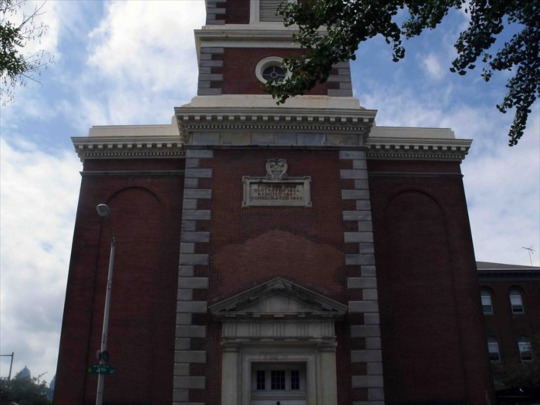
View On WordPress
#1844#Bible Riots#Exodus#Firefighters#Great Hunger#Irish Catholics#Irish Immigrants#Nanny Goat Market#Nativist Riots#Philadelphia#Popery#Protestants#The Kensington Riots
19 notes
·
View notes
Text

A long way from home
#red dead redemption 2#rdr2#molly o'shea#sean macguire#kieran duffy#rdr2 spoilers#I have SO MANY THOUGHTS about these three and their positions as Irish immigrants#or the child of Irish immigrants in Kieran’s case#and how all of them have different backgrounds and are in the gang because of different circumstances#I went into the game not knowing about any of the Irish immigrant plot lines#with them or the o’driscolls#and it hit me very hard#I will make a big post discussing it someday#and the layers of tragedy it adds to their characters#but I’m very tired and I love them very much#fanart#digital art#my art
569 notes
·
View notes
Text
Richard M. Welldam

My contribution to the PPT community: It's everyone's favourite grumpy Playtime Co. man!!!
I adore him + Close ups!
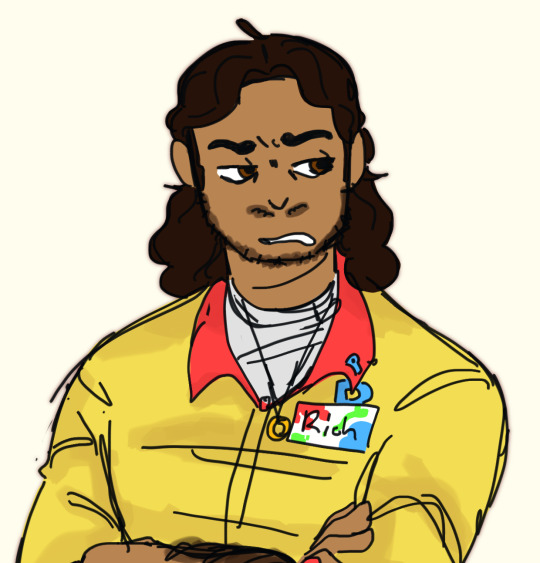



#When he's not colored in he looks like Markiplier LMAOAOAO#grumpy old simp#he's a 2nd gen Irish/Hispanic immigrant!#He wears his wedding ring as a necklace so he doesn't drop it 🥺#(And yes his hubby designed his nametag)#poppy playtime#poppy playtime fanart#rich poppy playtime#rich martinez welldam#art#character design#phrart#yes
115 notes
·
View notes
Note
Alfred, what is your favorite thing each of your roommates has brought over to your country? And to Ireland, Romano, and Lithuania, what is your favorite thing about America? (the country not Alfred.)
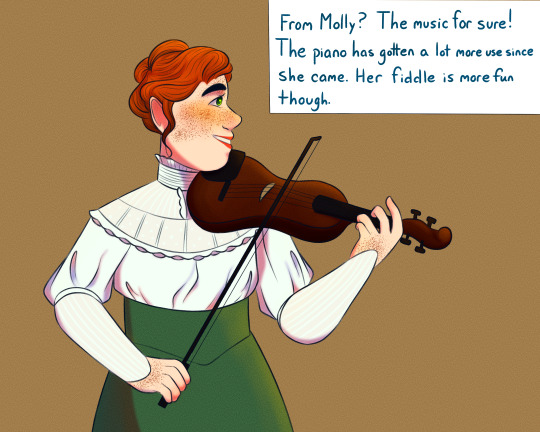


As for the others...
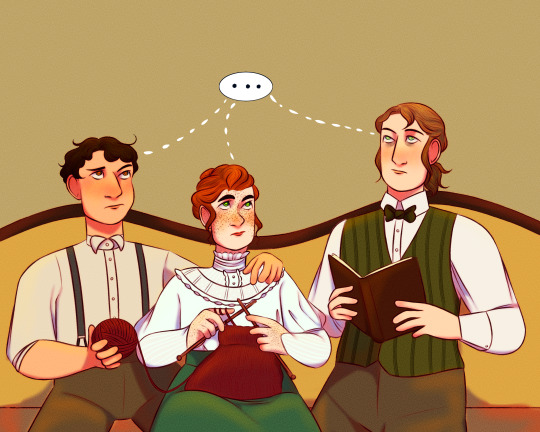

Alfred can afford to be a little more idealistic, but that's just his way.
**Historical Note: Though immigrants from each of these groups contributed in a variety of ways, these are some of the ways in which they contributed most prominently.
Irish Americans were incredibly active in the entertainment industry, especially in music. Irish Americans were very prominent in vaudeville, and eventually Broadway. However, this was due to a pre-existing music tradition that stemmed from Irish immigrants bringing over their folk music. Many Irish airs became popular parlor songs in the UK, America, and Canada. The strong Irish presence in the Union Army during the Civil War also further popularized folk songs such as "McLeod's Reel." Though the Potato Famine caused the decline of traditional music in Ireland, many songs and playing styles were preserved by Irish Americans in the United States and later carried back to Ireland in the 1890s-1920s when recordings began to become accessible. These recordings were also among the first to be sold in the United States.
Italian American cuisine is one of the most influential marks left by the community, especially from Southern Italians. Many innovations in Italian cuisine occurred in the United States, and many Italian immigrants became successful restauranteurs. This explosion occurred due to previously inaccessible foods suddenly being affordable in the United States, such as meat and imported cheese. Today, Italian American food is still one of the most popular cuisine choices in the United States.
Though all of the groups mentioned had involvement in labor union activity, Lithuanian Americans were particularly prominent activists. One of the most famous of these activists was Emma Goldman, but there were several others who formed the United Mine Workers and the Amalgated Clothing Workers Union. Sydney Hillman, a Lithuanian immigrant, was the head of the Amalgated Clothing Workers Union from the 1910s to the 1940s. Even in fiction, in Upton Sinclair's The Jungle, Lithuanian workers and their union activity are the central focus. Lithuanian Americans' strongest import really seemed to be their activism!
For all of these groups though, one big part of what made American so attractive was the comparative plenty to what they had in their countries of origin. Though many immigrants worked long, difficult manual labor jobs, they were able to afford new goods in the United States that had previously been unimaginable. This is mostly due to the United States' ability to produce goods en masse, which made them cheaper. Furthermore, in Ireland and Southern Italy, land ownership had become virtually impossible (through landlords hiking rent prices in Ireland or land distribution after the Risorgimento in Italy). Even if their positions were not enviable in the United States, from a financial standpoint, their salaries and the resources available put them in a slightly better position.
#hetalia#historical hetalia#hws america#hws romano#hws lithuania#hws ireland#nyo!ireland#immigrant trio#immigrant squad#hetalia ask blog#ask#last seminar my paper was on how the irish diaspora changed and preserved traditional music#so if i pop off a lot about that in the historical notes that is why (it is a roman empire in my brain of sorts)#this was a fun ask though! sorry for taking so long to answer!!
71 notes
·
View notes